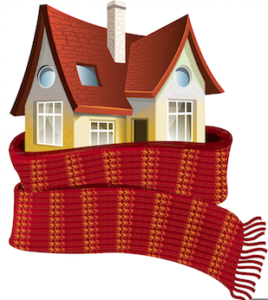Insulation is a very critical factor in enhancing the energy efficiency of buildings. The cost of heating, ventilation, and cooling accounts for more than half of the energy expense incurred by households. By insulating, the energy efficiency of heating and cooling units is enhanced substantially. The insulating material chosen determines the economic impact to be realized on the heating costs.
To fully understand how insulation improves heating and cooling in buildings, it is important to review the dynamics of heat loses in households with respect to building materials and the outside air temperatures.
In order to calculate the heating requirement for a building, you should first estimate and derive the heat loss from the building as a function of the total heat loss of transmission through the walls, roof, windows , doors, floors as well as ventilation and air infiltration. Experience and research show that the heat loss through walls, roof, windows, and doors has the largest impact.
The Heating Degree Day (HDD)
In building heat loss, the difference between the outside and inside temperatures plays a critical role. The first step is to understand the details of the weather data with reference to heating and cooling requirements. Heating degree day (HDD) is a measure of the total energy required to heat a building. It is derived from the difference between the ideal indoor temperature and the daily outside temperature observed. In order to derive this metric, you need to bring in other factors such as windows, insulation and solar heat gain.
Importance of Insulation
Insulation is very important in both residential and commercial buildings. This is because it saves money on energy bills, reduces energy use and the impact of greenhouse gas emissions. For a long time now, insulation has been used to reduce the reliance on heating and cooling systems. All this helps to improve the comfort of your home.
Types of Insulation
There are two main types of insulation that you can use for your home; bulk insulation and reflective insulation.
Bulk insulation acts as a barrier to the flow of heat between the indoors and the outdoors of your home. During summer, bulk insulation keeps heat out of your home while in winter; the insulation keeps heat in your home. This type of insulation is made from materials such as glass wool, natural wool, polyester or recycled paper.
Reflective insulation, on the other hand, is used in summer to deflect radiant heat and keep your home cool. It is made up of a shiny aluminum foil that is laminated onto plastic or paper. This type of insulation is mostly found in hot and sunny climates.
It is common to find insulation products that combine both reflective and bulk insulation.
Insulating Materials
Insulating materials are often supplied in two measures; the C-value and the R-value. The R-value of an insulating material refers to its measure of resistance to heat flow. The C-value, on the other hand, measures the ability of the insulating material to transfer heat per unit time. It is also specified as the rate of energy loss through a piece of material.
The US Department of Energy has a revised recommendation of the R-value based on different climatic zones. There is an online heating calculator that helps clients to understand the energy impact associated with certain R-value insulation materials.
The type of insulation to install will depend on the climate and whether you want to keep heat in or out of your home. The design of your home and the material it is made of are also factors to consider when installing insulation.


